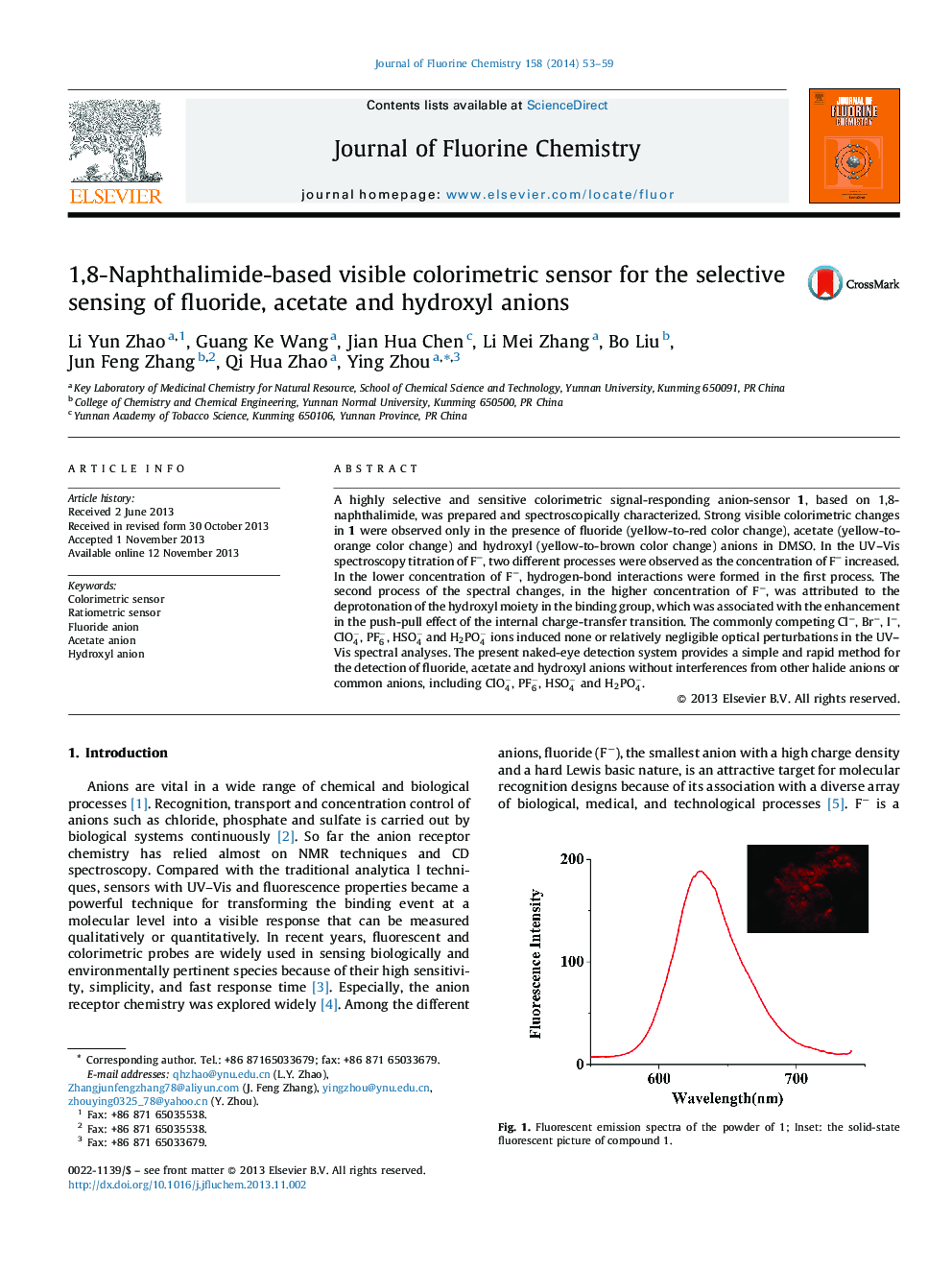| Article ID | Journal | Published Year | Pages | File Type |
|---|---|---|---|---|
| 1314371 | Journal of Fluorine Chemistry | 2014 | 7 Pages |
•We synthesized a highly selective and sensitive colorimetric signal-responding anion-sensor 1.•The solution of 1 changed from yellow color to red for F−, to orange for AcO− and to brown for OH−.•The color changes of F− are attributed to the deprotonation of the hydroxyl moiety in the binding group.•The commonly competing ions induced none or relatively negligible optical perturbations in the UV–Vis spectral analyses.
A highly selective and sensitive colorimetric signal-responding anion-sensor 1, based on 1,8-naphthalimide, was prepared and spectroscopically characterized. Strong visible colorimetric changes in 1 were observed only in the presence of fluoride (yellow-to-red color change), acetate (yellow-to-orange color change) and hydroxyl (yellow-to-brown color change) anions in DMSO. In the UV–Vis spectroscopy titration of F−, two different processes were observed as the concentration of F− increased. In the lower concentration of F−, hydrogen-bond interactions were formed in the first process. The second process of the spectral changes, in the higher concentration of F−, was attributed to the deprotonation of the hydroxyl moiety in the binding group, which was associated with the enhancement in the push-pull effect of the internal charge-transfer transition. The commonly competing Cl−, Br−, I−, ClO4−, PF6−, HSO4− and H2PO4− ions induced none or relatively negligible optical perturbations in the UV–Vis spectral analyses. The present naked-eye detection system provides a simple and rapid method for the detection of fluoride, acetate and hydroxyl anions without interferences from other halide anions or common anions, including ClO4−, PF6−, HSO4− and H2PO4−.
Graphical abstractFigure optionsDownload full-size imageDownload as PowerPoint slide
